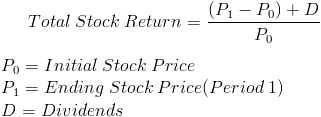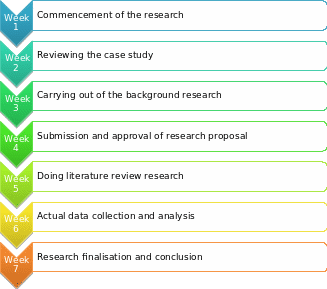Abstract
This paper will analyse the relationship between stock returns and three ratio variables, which are Price earnings ratio, Dividend price ratio, and Payout ratio. In this case, stock return is the dependent variable while Price earnings ratio, Dividend price ratio, and Payout ratio are independent variables. The analysis will be based on the Hong Kong Stock Market. Besides, the research paper targets to review existing relationship between individual industries trading in the Hong Kong Stock Market and their own financial data.
The analysis will establish the investors’ behaviour from the findings in the analysis of each accounting ratio. The analysis will be based on the regression with a sample of 100 firms from the Hong Kong Stock Market. For ease of analysis, the sample firms will be grouped into Banking and Finance, Trading and Logistics, Real Estate, and Tourism and Retail sectors. The study will not be a magic bullet in the relationship between accounting ratios and stock return in the Hong Kong Stock Market. Rather, other factors and market dynamics should be incorporated in making the eventual investment decision.
Introduction
Research background
Ratio analysis is a vital tool for analysing financial performance of a firm. Among the most common ratios in stock return analysis include Profitability ratio, Liquidity ratio, and Investment ratio. Series of past research studies have been carried out to focus on the relationship between stock returns and accounting ratios as primary variables. Most of these studies have focused on the Western stock market. However, there is no past study on the relationship between returns in stock within the Hong Kong Stock Market and the accounting ratio variables such as Price earnings ratio, Dividend price ratio, and Payout ratio.
This study will focus on stocks of companies within the Banking and Finance, Trading and Logistics, Real Estate, and Tourism and Retail sectors trading in the Hong Kong Stock Market. It is critical to carry out an analysis in these sectors because they have direct impact on the Hong Kong Stock Market and contain the major companies trading in this stock market.
Project research problem
It is important to review the relationship between stock returns and the three variables (Price earnings ratio, Dividend price ratio, and Payout ratio) within the Hong Kong Stock Market. The findings may reveal the actual reasons motivating investment decisions in the companies trading in the Hong Kong Stock Market.
Purpose of the research
The purpose of this research project is to establish the underlying motives prompting investors to invest in different stocks within the Hong Kong Stock Market as influenced by the stock returns.
Research questions
The research project will be limited to the following questions:
- What is the relationship between stock returns and the Price earnings ratio for the three sectors of study?
- What is the relationship between stock returns and the Dividend price ratio for the three sectors of study?
- What is the relationship between stock returns and the Payout ratio for the three sectors of study?
Research significance
The findings of the research project will be beneficial to investors within the Hong Kong Stock Market in making investment decisions based on stock returns over a period of time. Besides, the recommendations made may enable the companies trading in the Hong Kong Stock Market to adopt the most sustainable financial models to win the confidence of investors.
Limitations of the research
The study will not be a magic bullet in the alteration of investor behaviour as related to stock returns. It will only provide structures that must be combined with the values and goals of different investment options influenced by the performance of each of the accounting ratios. Therefore, the firms and investors cannot implement the recommendations without reflecting on external and internal dynamics within the Hong Kong Stock Market.
Summary of the proposed literature review
Introduction
Several past researches have been carried out to establish the relationship between stock returns and accounting ratio variables such as Price earnings ratio, Dividend price ratio, and Payout ratio within different stock markets across the world. However, there is no study to establish this relationship within the Hong Kong Stock Market. This research will aim to fill the above research gap.
Sources and authenticity
The literature review will be based on past case study researches, financial journals, academic books, and online finance websites such as yahoo.com, aastocks.com, reuters.com, google.com, and bloomberg.com. These sites are authentic since most of materials in them are from reputable firms. The academic journals to be used in this research paper will be selected from academic and authentic financial sites such as Pro Quest, Harvard Business Review, Emerald, ABI, google.com, and BNU e-database. The sources to be used in the paper will be sixty, that is, 40 from academic journals and 20 from others sources such as books, pamphlets, past reports, and authentic websites.
Methodology
Research approach
This research will be carried through qualitative approach. Use of the qualitative research approach will facilitate understanding of the dynamics surrounding the ratios and stock returns. This approach will create room for further analysis using different and divergent tools for checking the degree of error and assumption limits.
Data analysis
The collected data will be coded and passed through Statistical Package for Social Sciences (SPSS), version seventeen. In the process, cross tabulation will be used to compare and contrast the relationship between the ratios and stock returns. In order to quantify the relationship between the independent and dependent variables, regression analysis will be essential besides figures, charts, and tabular representation of the investigation. In order to aid the regression analysis, software such as Google Docs, Excel, SPSS, and EViews will be used.
Regression model
In order to review the correlation between stock returns and ratio variables, ordinary least square regression will be used. Below is the formula.
Y = α + β1X1 + β2X2 + β3X3
Where,
Y = Stock Return (dependent variable).
α =Value of Y at the point where explanatory variables’ values are zero.
β =Parameter indicating average alteration in Y; associated with each unit alternation in variable X.
X= Independent Variable.
In relation to the Hong Kong Stock Market, X1 will represent the Dividend price ratio, X2 will represent the Price earnings ratio, and X3 will represent the Payout ratio.
Other models and formulas
Formulas for calculating stock return, Price earnings ratio, Dividend price ratio, and Payout ratio are summarized below.
Dividend Price Ratio
In order to calculate this ratio, the researcher will obtain prices for sample firms on a monthly basis for a period of 12 months running concurrently. Data was obtained from the Hong Kong Stock Market website. The formula for calculating this ratio is;
Dividend Price Ratio = Dividend per Share / Price per Equity Share
Payout Ratio
Payout ratio is a reflection on the annual earnings that companies pay shareholders. Low ratio may mean that a company is retaining the earnings for expansionary motives while high ratio means that a company is consistently paying out earnings to shareholders. Data was obtained from the Hong Kong Stock Market website. The formula for calculating this ratio is;
Payout Ratio = Dividends per Share / Earnings per Share
Stock Return
Stock return represents the return on each unit of investment. In the case of this paper, calculation of investment ratio was done through the dividend adjusted approach. Data was obtained from the Hong Kong Stock Market website. The formula for calculating this ratio is;

Price Earnings Ratio
High Price earnings ratio is an indication of growth in the expected earning in future while low price earnings ratio indicates the opposite. Data was obtained from the Hong Kong Stock Market website. The formula for calculating this ratio is;
Price Earnings Ratio = Market Value per Share / Earning Per Share
Sample selection and sample size
The researcher will use convenience sampling in selecting the 100 firms with the three sectors. The main reason behind the use of convenience sampling technique is that it is time saving. To generate the sample size for this study population, the research will adopt the formulae created in 1972.
n=N/ (1+N (e2))
Where:
n = sample size
N= Target population
e= Degree of freedom
n=100/ (1+100*0.052)
n=100/1.25
n= 80
According to the Central Limit Theorem (CLT), if the sample size is large than 30, as will be the case in this study, X-bar is approximately normally distributed, regardless of the shape of the population. This suggested sample population is therefore suitable for the study.
Dependability and reliability
Dependability will be assured by providing clear, detailed, and sequential descriptions of data collection and analysis procedures. It is a quality that is relying on the study design being congruent with clear research questions, having an explicit explanation of the status and roles of the researcher, providing findings with meaningful parallelism across data sources, specification of basic theoretical constructs and analytical frameworks and data collection across a range of settings. This study seeks to fulfil these criteria as much as possible.
Methodology justification
Use of the qualitative research approach will facilitate understanding of the relationship between stock returns and accounting ratios. Attributes of the subjects under study will be qualitatively studied through observation, where the researcher will collect data using an observation schedule during data mining from different financial sites. Qualitative methods used in this study will generally apply to the analysis of the collected data where analytical tools such as chi square, regression and correlation methodologies will be used. These methodologies will help in identification of statistical patterns in the data on the relationship between stock returns and accounting ratios.
Expected results
It is expected that the ratios have direct but different relationships to stock returns within the Hong Kong Stock Market.
Research Timeline
Week 1: Research Commencement
This stage will involve reviewing the research topic and rationale for the proposed hypothesis. This stage may take one week, since choosing the topic will be dependent on available literature.
Week 2: Choosing the case study
Choosing the case study will be very challenging as research papers adopt different approaches. Specifically, I will have to choose the most convincing research variables from different research articles with a diverse approach to the research questions.
Week 3: Background research
Since materials are available for the research topic, I will have an easy time in merging the relevant material to the research question. This stage may take two weeks to accomplish.
Week 5: Conducting the literature review
This stage will be very demanding, since different sources of information will be searched. The sources of information that will be probed include the internet, the university library, course notes and public libraries with relevant information on the topic of research. I will concentrate on scholarly papers, conference proceedings, and relevant books.
Week 6: Collecting data and analysing data
This stage will be the most difficult in the research study. I will have to balance methods of research to present information about the topic. Data collected from financial statements will have to be scrutinized in detail. Each model and approach will have to be comprehensive to ensure that the researcher establishes deep answers, which provide an insight into the research problem to solve through the use of Google docs software.
Week 7: Research conclusion
Emerging themes will be identified and the findings will be interpreted and related to the research question. I will have to manage the data findings and interpretation within the scope of the research topic despite any research dynamics that may arise in the process. The final study will be reviewed to confirm its comprehensiveness in answering the research question before submission. The above timeline is summarized below.

